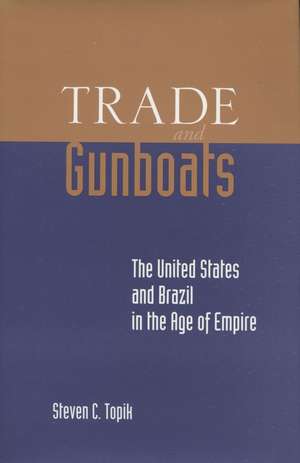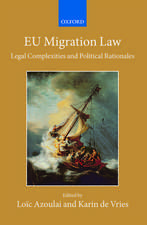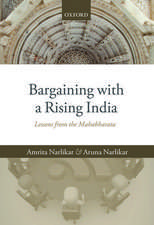Trade and Gunboats: The United States and Brazil in the Age of Empire
Autor Steven Topiken Limba Engleză Paperback – 31 ian 2000
A hundred years ago, the United States first projected itself onto the international stage, hoping to stake out a sphere of influence in Latin America just as the largest of Latin American countries, Brazil, ending a 67-year-long monarchical regime, struggled to redefine its relationship to the world economy. Debates raged between liberals and corporatists, between free traders and protectionists. When the trajectories of these two unequal giants collided, their interaction revealed much about the international economic and political affairs of their day that bears upon the debates surrounding today’s “new world order.”
The book begins by examining the Blaine-Mendonca Accord of 1891, the first commercial pact ever signed between Brazil and the United States, thus beginning a special relationship that lasted into the 1970’s. This is the first study of U.S.-Brazilian relations that seriously examines the internal politics and economics of both countries and how they played themselves out in the late nineteenth century. The author attempts a new kind of international history, comparative political economy, that examines not only internal dynamics but also the nature of the international regime at the time.
The book begins by examining the Blaine-Mendonca Accord of 1891, the first commercial pact ever signed between Brazil and the United States, thus beginning a special relationship that lasted into the 1970’s. This is the first study of U.S.-Brazilian relations that seriously examines the internal politics and economics of both countries and how they played themselves out in the late nineteenth century. The author attempts a new kind of international history, comparative political economy, that examines not only internal dynamics but also the nature of the international regime at the time.
| Toate formatele și edițiile | Preț | Express |
|---|---|---|
| Paperback (1) | 227.94 lei 3-5 săpt. | |
| Stanford University Press – 31 ian 2000 | 227.94 lei 3-5 săpt. | |
| Hardback (1) | 779.98 lei 6-8 săpt. | |
| Stanford University Press – 31 dec 1996 | 779.98 lei 6-8 săpt. |
Preț: 227.94 lei
Nou
Puncte Express: 342
Preț estimativ în valută:
43.62€ • 45.66$ • 36.09£
43.62€ • 45.66$ • 36.09£
Carte disponibilă
Livrare economică 15-29 martie
Preluare comenzi: 021 569.72.76
Specificații
ISBN-13: 9780804740180
ISBN-10: 0804740186
Pagini: 316
Dimensiuni: 152 x 229 x 20 mm
Greutate: 0.44 kg
Ediția:1
Editura: Stanford University Press
Colecția Stanford University Press
ISBN-10: 0804740186
Pagini: 316
Dimensiuni: 152 x 229 x 20 mm
Greutate: 0.44 kg
Ediția:1
Editura: Stanford University Press
Colecția Stanford University Press
Recenzii
"Few works in the history of U.S. foreign relations offers as much breadth and depth as this. Trade and Gunboats should be a model for those who aspire to write diplomatic history." —The Annals
"Topik has written a fine case study. It should be the model for future works." —Journal of American History
"A superb piece of work. For some years historians, especially in the diplomatic field, have criticized U.S.-oriented writing and have pleaded for work that examines crises from more than the U.S. side. Topik has provided a model study in this regard. . . . Stunning use of archival sources from several countries."—Walter LaFeber, Cornell University
"It is a considerable achievement to link so clearly the politics of two large and growing states in their effects on diplomacy; the author deserves credit for both his methodology and its product. Notable for its new information and fresh viewpoint."—Diplomatic History
"Topik has produced an outstanding study of trade rivalry between the U.S. and Brazil at the end of the nineteenth century. Trade and Gunboats adds admirably to what is known about the history of both countries. . . . It poses menaingful questions and answers them lucidly. This superbly crafted and timely work raises diplomatic history to a higher level."—Choice
"An admirable monograph. . . . This is the first scholarly study of U.S.-Lating American commerce and trade negotiation in the nineteenth century. . . . Topik's crisp prose, moving effortlessly between economic and political history, createds numerous pungent pen portraits."—American Historical Review
"An admirable monograph. . . . This is the first scholarly study of U.S.-Lating American commerce and trade negotiation in the nineteenth century. . . . Topik's crisp prose, moving effortlessly between economic and political history, createds numerous pungent pen portraits."—American Historical Review
Textul de pe ultima copertă
“Few works in the history of U.S. foreign relations offers as much breadth and depth as this. Trade and Gunboats should be a model for those who aspire to write diplomatic history.” —The Annals
“Topik has written a fine case study. It should be the model for future works.” —Journal of American History
“Topik has written a fine case study. It should be the model for future works.” —Journal of American History
Descriere
This book is the first study of U.S.-Brazilian relations that seriously examines the internal politics and economics of both countries and how they played themselves out in the late nineteenth century. The author attempts a new kind of international history, comparative political economy, that examines not only internal dynamics but also the nature of the international regime at the time.














